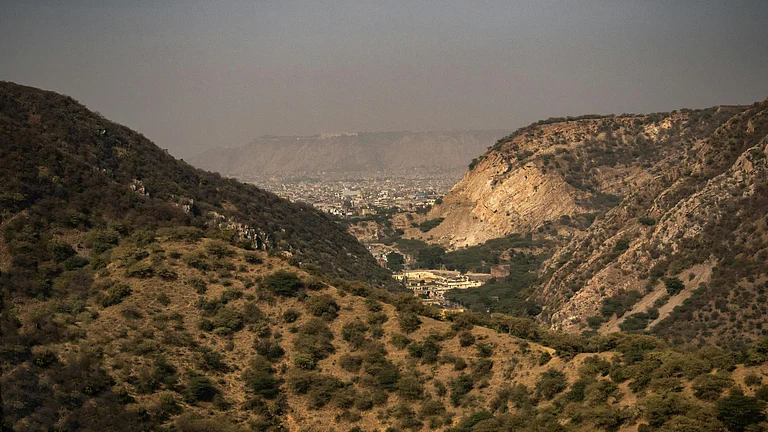Wheat can literally be today’s gold, as prices of the commodity have hit the roof. The Russia-Ukraine war had already disrupted supply chains. And India’s cold feet on its wheat export policy has further pushed up global prices.
On May 14, the government announced that India would be banning wheat exports. Previously, India was looking to fill the void created in the supply chain due to the ongoing war. It had committed to fill the supply shortages that resulted from Ukraine’s invasion, which alone accounted for 12 percent of the total exports in the world.
To export or not to export
Ignoring concerns raised by several experts and stakeholders that India’s own production and procurement this year was impacted by the heat wave seen across the country, the government allowed the private sector to make hay while the sun shines. Farmers were reportedly getting 10 per cent higher price than the Minimum Support Price (MSP) of wheat due to the export policy.
But India’s increasing inflation, especially in food, perhaps forced the government to rethink its strategy. The heat wave has impacted production, which could have a bearing on next year’s stock. With the uncertainty around the war not showing signs of waning, inflationary pressures could only get worse. Inflation in wheat in March has been the highest at 14.04 per cent among food articles, except in vegetables.
“The government perception that inflation - especially in food commodities - is going out of hand seems to have been a cause of concern. Too much price volatility is not something that would be acceptable. The domestic market price is, as it is, up. The banning would not reduce prices but at least will hold it at current levels. Farmers are going to still make more money than what they used to earlier but they would not be able to make a lot of money (that exporting would have allowed them to),” said NR Bhanumurthy, vice chancellor, Dr B.R. Ambedkar School of Economics University, Bengaluru.
The ban sent global wheat prices soaring as global prices were up almost 6 per cent a bushel when markets opened on May 16. Local prices fell by 4-8 per cent in different states. Despite the direct impact on prices, some maintain that the ban should have been put in place.
“The ban was important because we cannot allow unbridled wheat exports, without realizing that in the days to come we could face domestic problems if we export whatever is surplus in this country. It also has to be kept in mind that there’s one more year before the next wheat crop comes in. Because of the climate change, we live in times of turbulence. We don’t even know if there’d be another Covid wave. We have to be cautious keeping in mind all these factors,” agriculture expert Devinder Sharma explains.

Why withdraw export policy?
One of the reasons behind the decision to withdraw export could be that the revised estimates of wheat production could be lower than the 111 million metric tonnes (mmt) that were being estimated earlier. Chair Professor for Agriculture at ICRIER Ashok Gulati and Sanchit Gupta, researcher at ICRIER in a column for The Indian Express have argued that wheat procurement is likely to end up at around 19 to 20 mmt by June-end against the more than 43 mmt last year and that another factor could be April’s wheat inflation being 9.59 per cent (y-o-y) against overall cereal inflation of 5.96 per cent.
Several experts have also pointed out that excess production was a false picture that was painted with inaccurate intelligence on wheat production and analytics thereby resulting in misplaced policy decisions.
“In its exuberance to be a messiah to the world, India prodded private trade to export vast quantities of grain, which they complied with gusto. GoI (government of India) also bravely announced an extension of the subsidised food programme by six months. Therefore, GoI's announcement to ban export of wheat - banning wheat export contracts by the private sector, allowing only government-to-government export - has come as a bolt from the sky not only for Indian farmers and traders but also for the international community. With this, India has lost significant credibility, underlined by G7 criticising the move,” Ajay Jakhar, chairman of Bharat Krishak Samaj, wrote in a column for The Economic Times.
Jakhar argues that after 75 years of independence, India still has no credible estimates on real-time crop production, data of annual consumption, or of stocks with private trade in the country. These kinds of interventions, he says, upsets the calculations of farmers and traders who are holding stocks.
“Approximately 2.5 mt of wheat procured by exporters are stored in the open at ports, and 1.2 mt are with traders across the country. Along with traders, tens of thousands of farmers are also holding wheat stocks. Exporters have contracted in-country stocks with small traders with a clause for cancellation of contracts if the government should intervene as it has done now. Many contracts will now stand cancelled,” he wrote.
According to reports, about 4.5 mmt of wheat has already been contracted for export in FY23. Of this, one-third has already been exported in April this year. To avoid chaos, the government has allowed consignments that were already parked for custom clearance on or before May 13 to go through.
"It has been decided that wherever wheat consignments have been handed over to Customs for examination and have been registered into their systems on or prior to May 13, such consignments would be allowed to be exported," the commerce ministry said in a statement.
Global factors and domestic players
A day after the government notified the ban, wholesale prices of wheat crashed in local markets of all major wheat-producing states, except Punjab, Uttar Pradesh, and Rajasthan. On May 14, Madhya Pradesh local wholesale markets recorded the highest one-day fall. Wheat prices in the state fell by about Rs 94/quintal to Rs 2,039/quintal, down from Rs 2,133 on May 13.
Global inflationary pressures as well as dry conditions and high temperatures have impacted EU’s wheat crops and wheat sowing in spring in the US. All these together make India completely dependent on a good monsoon and take a relook at its contingency plans. As of April 1, 2022, the Food Corporation of India’s (FCI) wheat stock stood at 189.90 lakh tonnes. The stock has declined by 83 lakh tones within a year, primarily because wheat demand under the PMGKAY (Pradhan Mantri Gareeb Kalyan Yojna) in the last financial year of FY22 went up by 74 per cent to 187 lakh tonnes, compared to 107 lakh tonnes recorded in FY21.
Former agriculture secretary in a co-authored column in The Financial Express wrote that several water tanks have been dug in villages across India, which needs to be desilted and prepared to conserve rainwater in order to make use of the monsoon. While India has normal monsoon predictions for 2022, the government needs to push for the adoption of drought-tolerant varieties of crops in at least the drought-prone areas.
“On the sidelines, a lesson for states like Punjab and Haryana is noteworthy… wheat farmers in all other states, barring Punjab (and Haryana, to some extent), benefitted from the rising price rally (till May 14, 2022),” Punjab’s higher transaction costs at about 8.5 per cent served as a deterrent for private traders to buy from the state. This resulted in wheat prices being up only marginally than the MSP but was the lowest among other states.
“The state may learn lessons from Madhya Pradesh, and possibly moderate transaction costs, to help their farmers gain from building price dynamics,” Hussain wrote.
Echoing Hussain, Bhanumurthy says that some states are better positioned in terms of exporting than others. “Madhya Pradesh started with soyabean and then they became big producer of wheat. As domestic consumption of soyabean is less, it gave them better marketing capacity, especially with international players. For wheat also they were able to similarly draw better bargains. But traditional states like Haryana and Punjab which are largely MSP-driven, who are more into traditional marketing systems, I feel could not adapt to the international trade practices.”






























